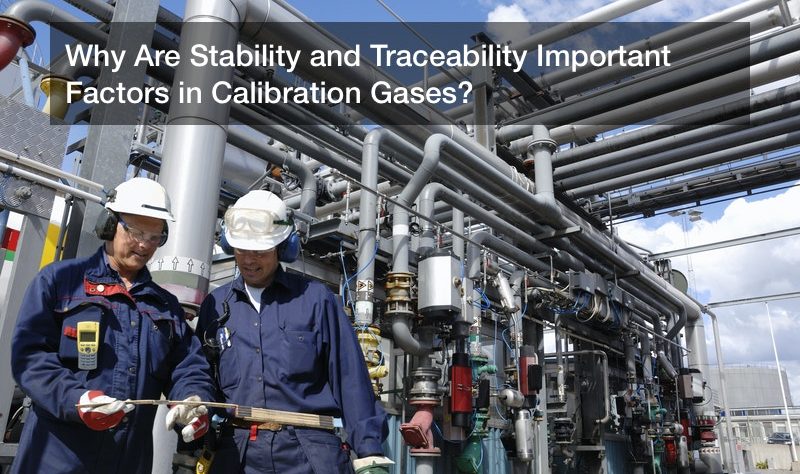
Calibration gases are reference gas mixtures or gases used as a comparative standard in calibrating analytical instruments such as gas detectors and analyzers. These specialty gases should thus be of precise and well-known composition. The terms ‘stable’ and traceable’ refer to calibration gas qualities stipulated in the EN 14181 standards that got published in 2002.
These terms are a source of confusion for many. But understanding them can help you in choosing an ideal calibration gas for your applications. This post provides a clear explanation of ‘traceability’ and ‘stability’ terms as they relate to calibration gases.
What’s Calibration Gas Mixture Stability?
Stability denotes the declaration of the ability of the components in a calibration gas to stay in the concentrations that they are after their initial concentration gets certified by the gas manufacturer. According to the ISO 6141 standards, the stability of calibration gases should always be indicated on the certificate of analysis that accompanies such gas packages. The ‘shelf life’ or ‘use by date’ of a calibration gas may also be considered as a measure of stability.
Factors that Determine the Stability of a Specialty Gas Mixture
The stability of a calibration gas or gas mixture gets influenced by various factors, which include:
• Inner cylinder and valve surface treatments. Eliminating contaminants from such surfaces ensures that your calibration gases stay more stable.
• Cylinder preparation by evacuation, purging, and heating also helps improve stability. The use of such cylinder preparation before refilling eliminates impurities. This process ensures that the filled gas is pure and more stable.
• Selection of ideal valve and cylinder materials can also improve stability. Non-reactive materials should be selected for calibration gas cylinders and valves. These materials prevent reactions within the filled gas cylinders.
• Cylinder segregation based on gas type prevents contamination.
• The use of advanced gas filling technology and ultra-high purity components also improves the stability of gases.
• The use of special analytical techniques and the stability tests to determine gas stability levels also influences the stability. One or two of these steps can’t lead to a stable calibration gas mixture. Instead, you have to use a combination of all these steps to achieve a more stable calibration gas or gas mixture.
What’s Calibration Gas Mixture Traceability?
Traceability of the measurement of a calibration gas or gas mixture denotes the ability to maintain an unbroken chain of comparisons to a declared reference measure with each having a stated uncertainty. Traceable calibrations offer you a means to get consistent data over time. The goal of having such calibrations is to deliver international and national comparability.
A function testing gas or its mixtures are traceable to national standards or certified reference gas materials. You can get these standards from the national measurement institute. The commercial gas companies assign a certified value of gas mixtures in two main ways.
They can assign a value by analyzing the contents of the calibration gas cylinder after its preparation. Traceability gets determined through a series of comparisons between gas samples from a first reference mixture and the gas-filled in the containers. The primary reference gas mixtures are prepared by the national standards institute.
The companies can also do the same goal by measuring the weight of gases added into a cylinder during its refilling. Measuring traceability by weight involves comparisons of the gas cylinder’s weight through the unbroken chain to a weight, which has gotten compared to the SI mass standard.
There are two types of calibration gases in the industry. These types include calibration gas mixtures and pure calibration gases. All these categories of gases need to be stable and traceable. Understanding the stability and traceability of calibration gas is essential in helping you to know the ideal calibration gas that fulfills legislative and industry standards.
It’s thus vital to always make sure that you know or can find out the traceability and stability of any calibration gas or gas mixture before buying it. If you don’t understand anything in this regard, it’s always prudent to talk to your calibration gas supplier.
